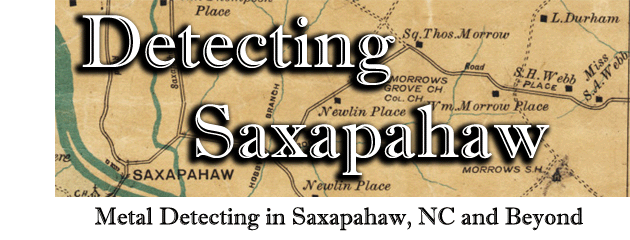We spent two days this weekend hoping to save some more history, and managed to do quite well on bullets. Day one yielded six 58 caliber Minie balls, conical bullets named for their French inventor, Claude-Etienne Minie. Due to the earth movement at the site, one of these was found sitting directly on top of the ground! I also recovered three Williams cleaner bullets, complete with the zinc base used to remove build up from the rifle barrel when fired. I found one mangled round ball, several large pieces of melted lead (often referred to as "camp lead"), and two brass rivets. The small brass wire in the same picture is part of a J hook, used on a knapsack. It is broken in two places - the left is missing a button-like end, and the right is missing the remainder of the wire that would loop back around giving the "J" hook its name.
Day two at the site again proved to be good for bullets, yielding three more 58 caliber three-ring minies and three Williams cleaners along with some smaller camp lead. I found a few post-war items of interest as well, pictured below. The half-dollar sized token is an aluminum coupon for Palmolive soap, possibly from as late as the 1950's. I noticed the top of the bottle sticking up from the ground, and carefully excavated it intact. It reads "Syrup of Black Draught", a laxative produced since the late 1800's. The button is iron backed, with an anchor in wreath design on the front. Given where it was found I was really hoping for a Civil War era Federal Navy button, but it turned out to be a considerably more modern fashion button.
I had a great weekend getting out with Jim to save some history, and managed to have some of my best days ever with regard to bullets. I do regret not finding this site before grading took place, as there is no telling how many more relics have been pushed and buried under feet of earth. But on the other hand, I am proud to have saved a few more pieces of American history from being lost forever beneath the ever expanding concrete jungle. And that, as they say, is what relic hunting is all about.
